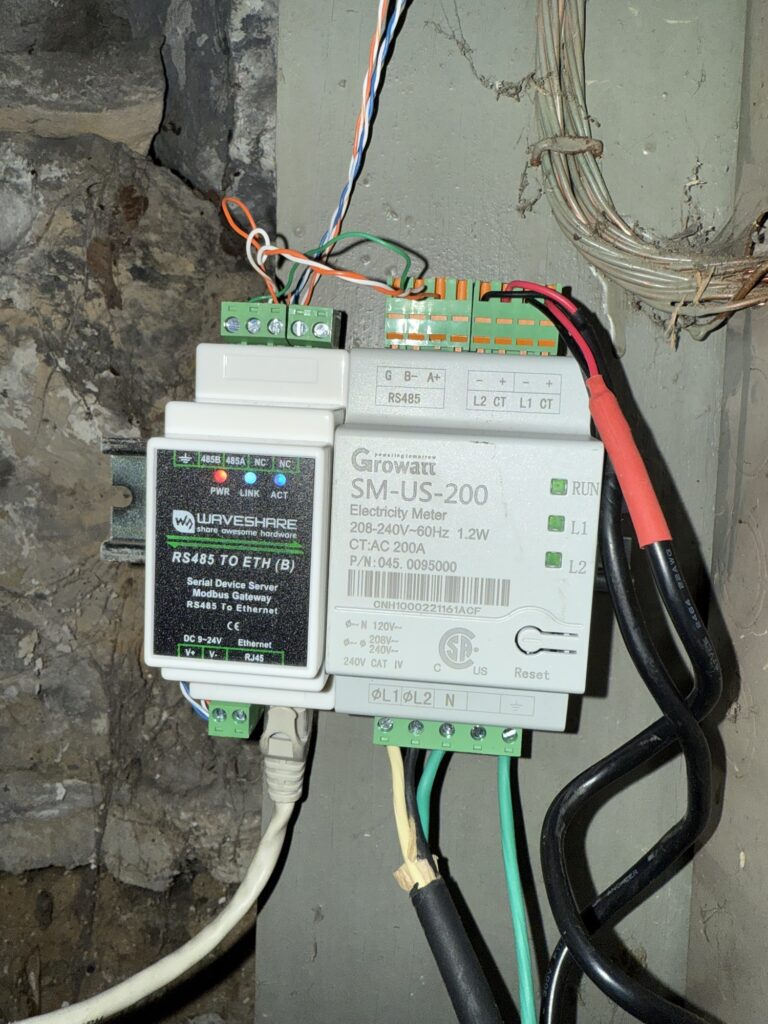
In order to not get a nasty gram from my power company, I needed to set up zero export. Basically what this does is prevent my solar system from feeding the grid. I thought about doing this and getting paid for my surplus production, but this process is more trouble than it is worth for me. In order to set up the zero export, my inverter needs to know how much power is flowing into and out of both my solar system and the power grid. These two little boxes do that. The bigger of the two boxes is the smart meter. This talks to the inverter and tells it how much power is flowing on the 2 main legs going into my house after my power meter. The issue I was having was the distance. MODBUS-RTU is a bus protocol for automation controls and other devices. It is also known as RS485. This really neat communication protocol uses two wires and is almost always universal between different manufacturers. It has become a standard in the solar industry because of its ease of use and easy to implement. My issue was my inverter is a good distance from my main panel. My solution was to send the data over my network. I am using MODBUS over tcp/ip which eliminates any distance limitations. In theory, I could extend the bus across the world and it wouldn’t matter. I have a second box in my shed with a WiFi bridge and it works flawlessly. I will soon set up a low voltage system in my shed to power this equipment as well as an additional raspberry pi running Solar Assistant for additional more detailed data. This raspberry pi will use the MODBUS protocol to communicate with the inverter and the smart meter and will relay that data to Home Assistant where I can get more advanced with some of my automations and create more detailed custom dashboards. The RS485 bridges I used are from WaveShare and the WiFi bridge I am using is a Vonets Val-11g-300
WiFi bridge…
WaveShare Rs485 to Ethernet bridge…
